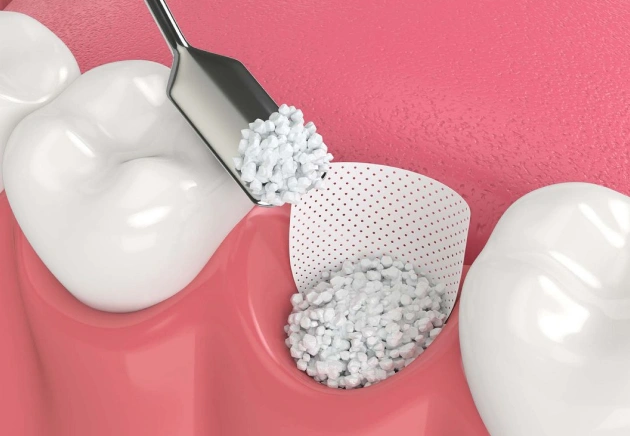Pay Online

Preventing Bone Loss After Extraction
Bone grafting is a straightforward procedure performed right after a tooth extraction to minimize bone shrinkage. During the procedure, the empty socket is filled with bone graft material—such as cadaver bone, animal-derived bone, or synthetic bone—to maintain the natural width and height of the jawbone. This helps improve the success of future restorative treatments like dental implants, bridges, and dentures. Preserving existing bone in this way is not only more cost-effective but also less complicated than other bone grafting procedures needed to rebuild lost bone.
Reasons for Bone Grafts
Bone grafting is typically a highly successful procedure, offering a better solution than dealing with missing teeth, tooth decay, or deformities. It helps to increase the size of the jawbone and fill in any gaps or defects. Essentially, bone grafting improves both the health and stability of your teeth in two main ways: by enhancing the structure of the jawbone and providing a solid foundation for future dental restorations.
- Jaw Stabilization: Bone grafting stabilizes and restores the jaw's foundation, making it ideal for dental restorations or implant surgery. It can also correct deformities and provide added support by reshaping the bone.
- Preservation: Bone grafting effectively prevents or minimizes bone loss after tooth extraction, periodontal disease, or other invasive treatments, helping to maintain the integrity of the jawbone.
Strengthening Dental Implants
If you need dental implants to replace missing teeth, a bone graft may be required to provide support in areas where bone loss has occurred. To determine if bone grafting is right for you, we will perform a thorough evaluation. If you're ready to address the discomfort caused by oral bone loss, we offer solutions that restore the function of your teeth and enhance your overall quality of life.
